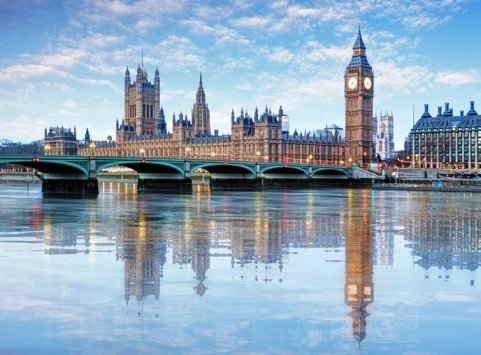Is It Safe to Travel to Alaska?
Discover if Alaska is safe to travel with this guide and learn about the weather, wildlife, and safety tips for different types of travelers.
Essential Tips and Insights on Is Alaska Safe to Travel?
-
Alaska is known for its unique adventures and is safe for those who plan well and are aware of its wilderness.
-
Travelers should be prepared for difficult weather conditions, meeting unfriendly animals, and the risks associated with being in a remote place.
-
From solo wanderers to travelers with children, every kind of traveler must follow certain precautions, such as carrying emergency devices and guided tours, to be safe.
Alaska, known as "The Last Frontier," is one of the dream destinations for nature lovers and adventure seekers. But for many travelers, the question is, “Is Alaska safe?” It might give the impression that it's too wild or has too many remote areas that make it unworthy or unsafe to visit. However, Alaska can become the best experience if one is aware of it because it is safer than one thinks. Of course, there are some challenges, such as severe weather and wildlife encounters, but those are also part of what makes this destination so special. With knowledge of possible risks and preventative measures, you can experience all that Alaska has to offer.
In this guide, you will find out why travelers consider this US state dangerous and the tips for an enjoyable and safe trip to Alaska.
What Travelers Must Know to Stay Safe in Alaska
While Alaska is far from being an unsafe destination nowadays, travelers need to be careful to see any possible hazards they may face while out there. Let’s have a look at some of the factors that are important for travelers to consider for safety.
Prepare for Weather Conditions
The weather in Alaska is one of the main challenges that travelers might face while exploring. During winter, the temperatures in some parts of this US state can go as low as -80°F in regions like Fairbanks. Other than this, travelers might also face blizzards, frozen roads, and strong winds. During summer, although less challenging, the weather still poses difficulties with heavy rainfall, fog, and long hours of daylight or dark.
Therefore, pack the right clothes to stay safe in the country. You must include thermal undergarments, waterproof gear, and sturdy footwear. Travelers, too, are advised to check the weather forecast frequently before visiting the country. Also, make provisions by bringing food, water, and a first-aid kit to ensure safety if faced with unpredictable weather.
Be Aware of Wildlife Encounters
Alaska’s expansive wilderness is filled with all sorts of wildlife, including bears, moose, wolves, and caribou. While it's rare, these beautiful creatures can be extremely dangerous if they feel threatened or you get too close.
Bears, particularly, are found everywhere throughout many parts of Alaska, and travelers should bring bear spray, make noise to avoid surprise encounters, and travel in groups. They are actually far less likely to be aggressive than bears but can still be dangerous if threatened, especially during mating seasons.
Whether you are enjoying the great outdoors on foot or two wheels, it’s critical to keep a safe distance from wildlife and understand how to respond if you cross paths with a dangerous animal. Also, make sure that your food should always be stored properly and never left unattended at a campsite.
Stay Safe in Remote Locations
Some parts of Alaska are really remote and far from services, so you should plan ahead before heading into these areas. In some places, there is no cell service, so you’ll need to bring a satellite phone or a GPS device with emergency functions.
Also, tell someone where you are going and when you expect to be back and check in if you can. Besides communication, make sure to carry the essentials for your trip, such as food, water, a first aid kit, and so on. If you’re going way into the bush, traveling with a local guide who knows the area is highly advisable.
Prepare for Outdoor Activities and Adventure Safety
Alaska is an adventure paradise with hiking, kayaking, glacier trekking, and more. But these activities come with risks, especially in rough terrain and bad weather. Make sure you’re physically prepared for your activity, know your limits, and choose activities that match your fitness and experience level.
Use the right gear, such as sturdy hiking boots, life jackets for kayaking, and helmets for climbing. Some activities, like glacier trekking, may require special training or experience. Joining a guided tour is a great safety option.
Practicing Road Safety
Driving on Alaska’s scenic roads can be exhilarating, but it comes with its own set of risks. During winter months, icy roads and snowstorms can be hazardous, so check road conditions before you head out. Wildlife, especially moose, bears, and other animals, often cross roads, especially at dawn and dusk, which is an added danger.
Travelers should be alert and cautious while driving. Also, you should make sure your vehicle is equipped with winter tires.
Safety Considerations for Different Travelers in Alaska
Alaska’s wild and adventurous landscape is a draw for all kinds of travelers. Each type of traveler has its own safety concerns. Knowing these will help you have a safe trip.
Solo Travelers
Solo travelers generally look for adventure and personal growth, but safety is equally important when traveling alone in Alaska. While the state has amazing experiences, many of the locations are remote, and solo adventurers can get into trouble.
Plan your route in advance, and tell someone your itinerary. Also, carry a satellite phone or GPS device for emergencies. You can also sign up for the STEP app through the US Department of State. This will give you an extra layer of security.
Backpackers
Backpackers in Alaska are drawn to the state’s rugged landscape, from national parks to wilderness areas. But venturing into these remote areas requires extra caution. Backpackers should have a good understanding of the terrain, pack survival gear, and be prepared for extreme weather.
It’s also a good idea to carry a first-aid kit, enough food and water, and be aware of wildlife in the area.
Cruise Travelers
Cruise travelers come to Alaska to see the coastal scenery and wildlife. While cruises are generally safe, there are special safety considerations for travelers on the water.
Passengers should follow all safety protocols provided by the cruise line, especially when getting off the ship for shore excursions or wildlife viewing. It’s also a good idea to check the cruise itinerary for weather delays or disruptions that could impact safety.
Group Travelers
Group travelers have shared resources safely in numbers and can experience Alaska’s attractions together. When traveling in a group, it’s important to have a leader or guide, especially for remote activities or outdoor adventures.
Stay organized and have a clear itinerary to avoid getting lost or miscommunicating in Alaska’s vast landscape.
Photographers and Artists
Photographers and artists come to Alaska for its unmatched natural beauty, from dramatic landscapes to wildlife. But capturing those moments requires safety precautions, especially when working in remote areas or in bad weather.
Artists should be prepared with the right gear, including sturdy shoes, weatherproof equipment, and protective clothing. And be aware of wildlife in the area and the risk of getting lost in remote places.
Safety Tips for an Enjoyable Trip to Alaska
To have a memorable and safe time in Alaska, you need to follow some safety tips that will help you deal with the challenges of this wild and remote state.:
-
The weather in Alaska is unpredictable, so dress in layers and bring waterproof and windproof gear. If you are going into snow or in wet terrain, consider sturdy boots and thermal wear.
-
Buy travel insurance plans from reliable insurers such as AXA Travel Insurance. It will help you cover medical emergencies, trip cancellations, and unexpected events so you can relax and enjoy your trip to Alaska.
-
Respecting the local customs and traditions will allow you to learn more about the local life there. If meeting indigenous villages or tribes, consider getting their permission before clicking their photos.
FAQs
1. Is it safe to hike in Alaska’s wilderness?
Yes, if you are completely prepared. You can carry bear spray, follow trails, and be aware of wildlife in the area. You can also consider a guide if you are not familiar with the area.
2. Are Alaska’s roads safe to drive?
Alaska’s roads are mostly safe, but conditions can be rough due to snow, ice, or limited light in remote areas. So, carry emergency supplies, check road conditions, and drive slowly, especially in winter.
3. What should I do in case of an emergency in Alaska?
You can dial 911 for immediate assistance in Alaska. When going to remote areas, carry a satellite phone to call for help. You can also consider informing about your itinerary before going into an isolated area.
4. Is Alaska safe for families traveling with children?
Yes, the state is safe for families traveling with children if proper precautions are taken. Visit family-friendly activities, and dress appropriately for the weather.
5. Is Alaska Safe for Solo Travelers?
Yes, Alaska is safe for those traveling solo. But it is important to prepare yourself in advance. You must stick to the marked trails and avoid hiking to unknown areas.

Travel Assistance Wherever, Whenever
Speak with one of our licensed representatives or our 24/7 multilingual insurance advisors to find the coverage you need for your next trip. Contact Here



